

27 September, 2024
| La mesa COPAL se inspira en diversos elementos rituales arraigados en México, específicamente en las “copaleras”, que son objetos similares a los incensarios o calderos abiertos utilizados para quemar copal.
El copal, derivado de la palabra náhuatl “copalli”, es una resina de árbol utilizada como incienso ceremonial y tiene un gran significado simbólico, visto como la “sangre sagrada de los árboles”. Produce un humo blanco fragante que, según se dice, facilita la comunicación entre los seres humanos y las deidades. Dentro de la rica diversidad de prácticas ceremoniales mexicanas, diversos incensarios como incensarios, sahumadores, sahumerios y braseros han jugado roles importantes, algunos de ellos sirviendo incluso como plataformas elevadas o soportes en ceremonias. |
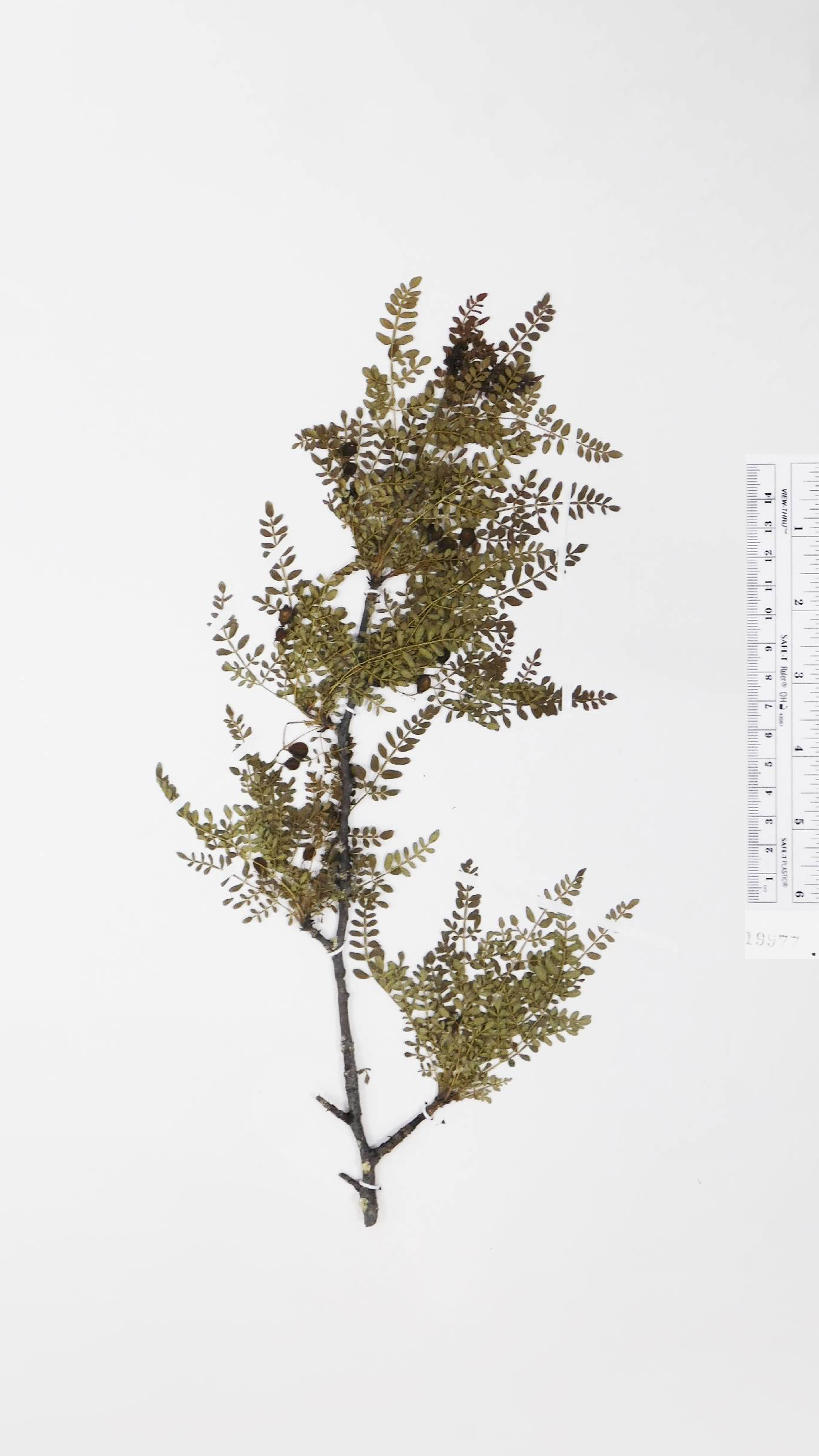
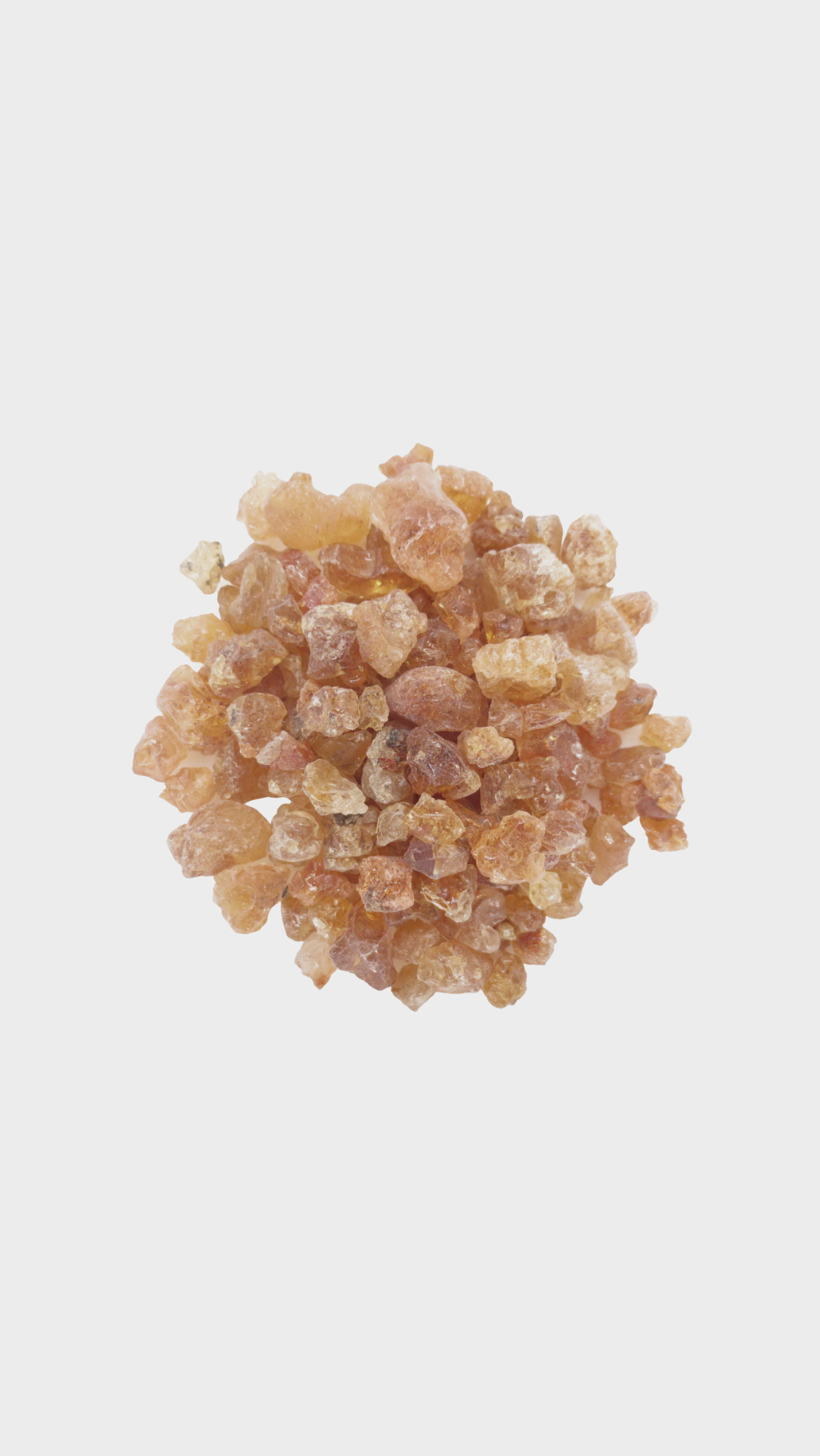
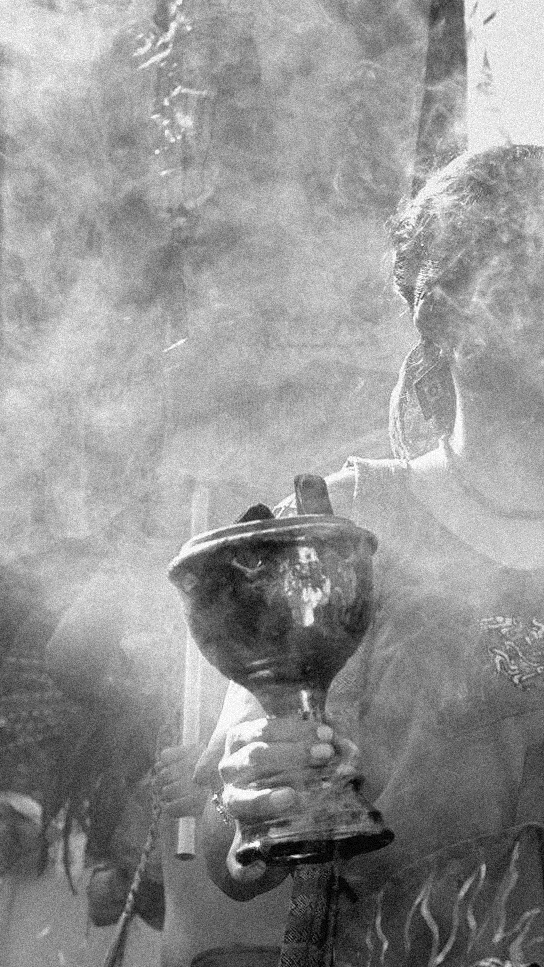

Enveloped in an aura of mysticism, the COPAL table appears to float in the air, defying gravity through its cantilever design. Crafted with precision, the COPAL Coffee Table is made up of six half spheres—three large and three small—that are skillfully assembled to create a visually challenging piece. The COPAL table is made in multiple materials, among these Green Tikal and Black Orizaba marble, cast bronze, and wood, each giving a distinct character to the piece.
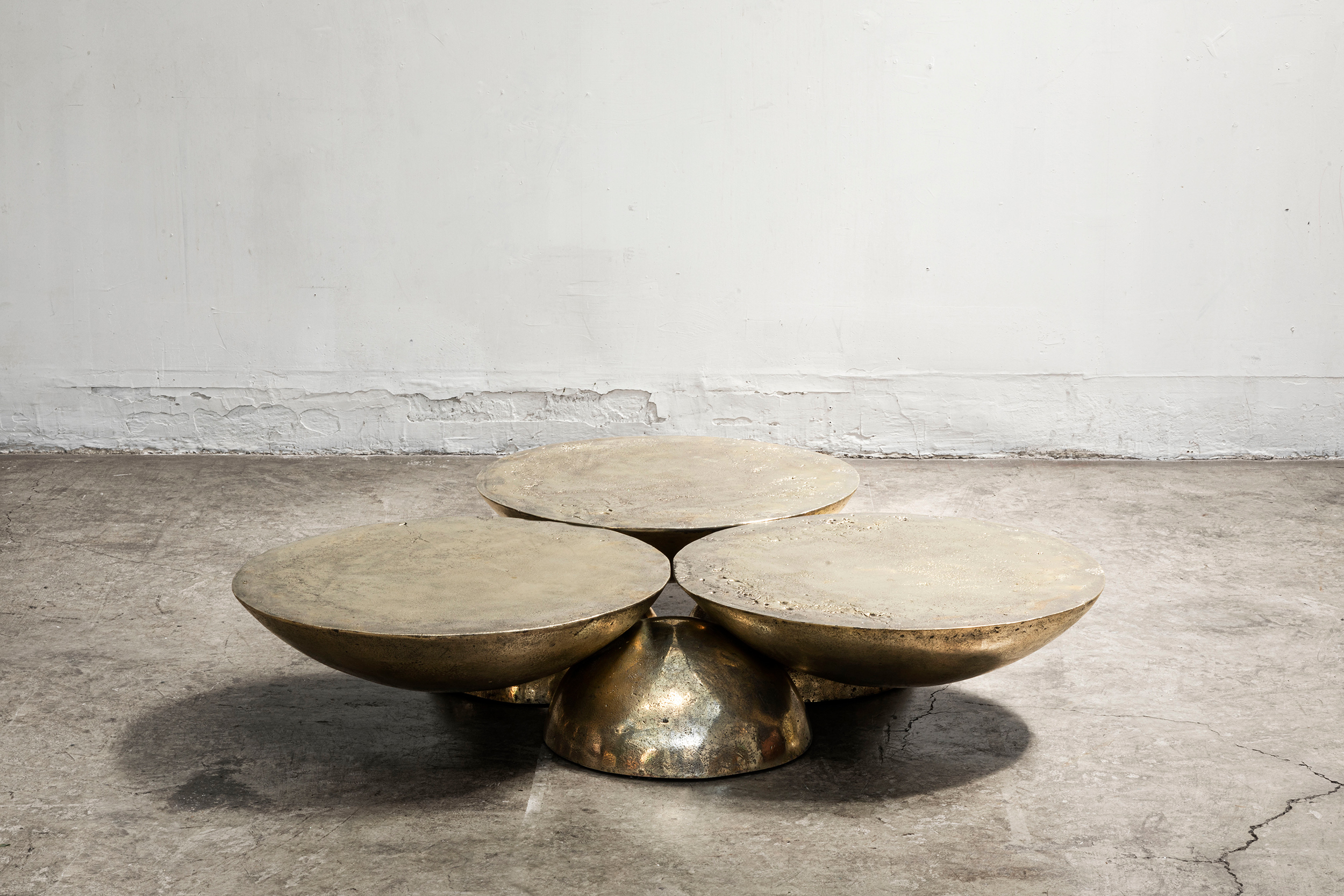
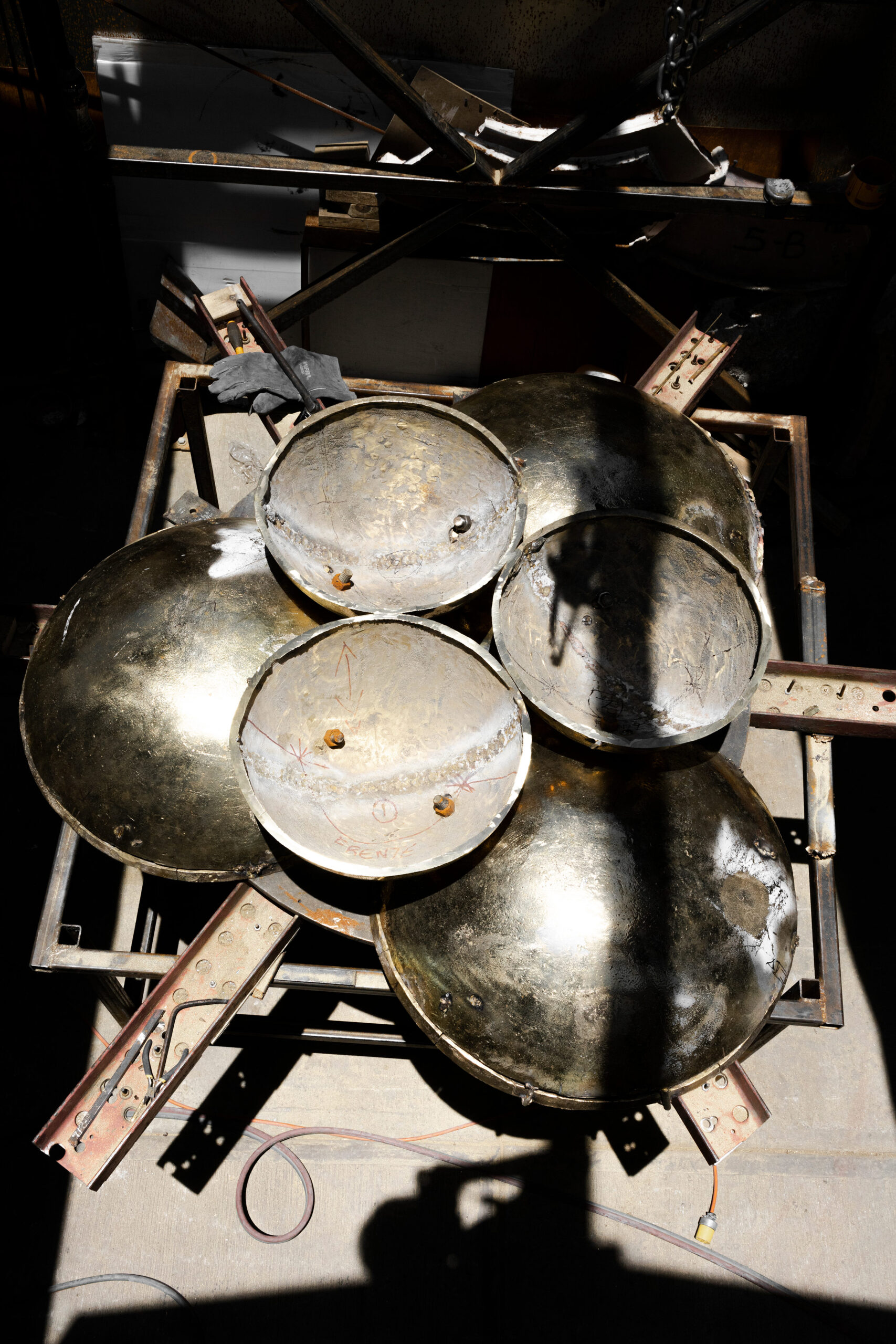
Los elementos ocultos de la mesa y la conexión tangencial de sus partes contribuyen al equilibrio de la pieza y a la integridad estructural del conjunto. Su composición da como resultado una pieza que tiene un equilibrio perfecto.
Al igual que su contraparte más grande, la mesa lateral COPAL, compuesta por cuatro piezas idénticas interconectadas mediante cerraduras ocultas, encarna la misma esencia de equilibrio, pureza y misticismo. Esta técnica de construcción da la impresión de que tres de las cuatro partes tocan delicadamente y flotan en el aire.
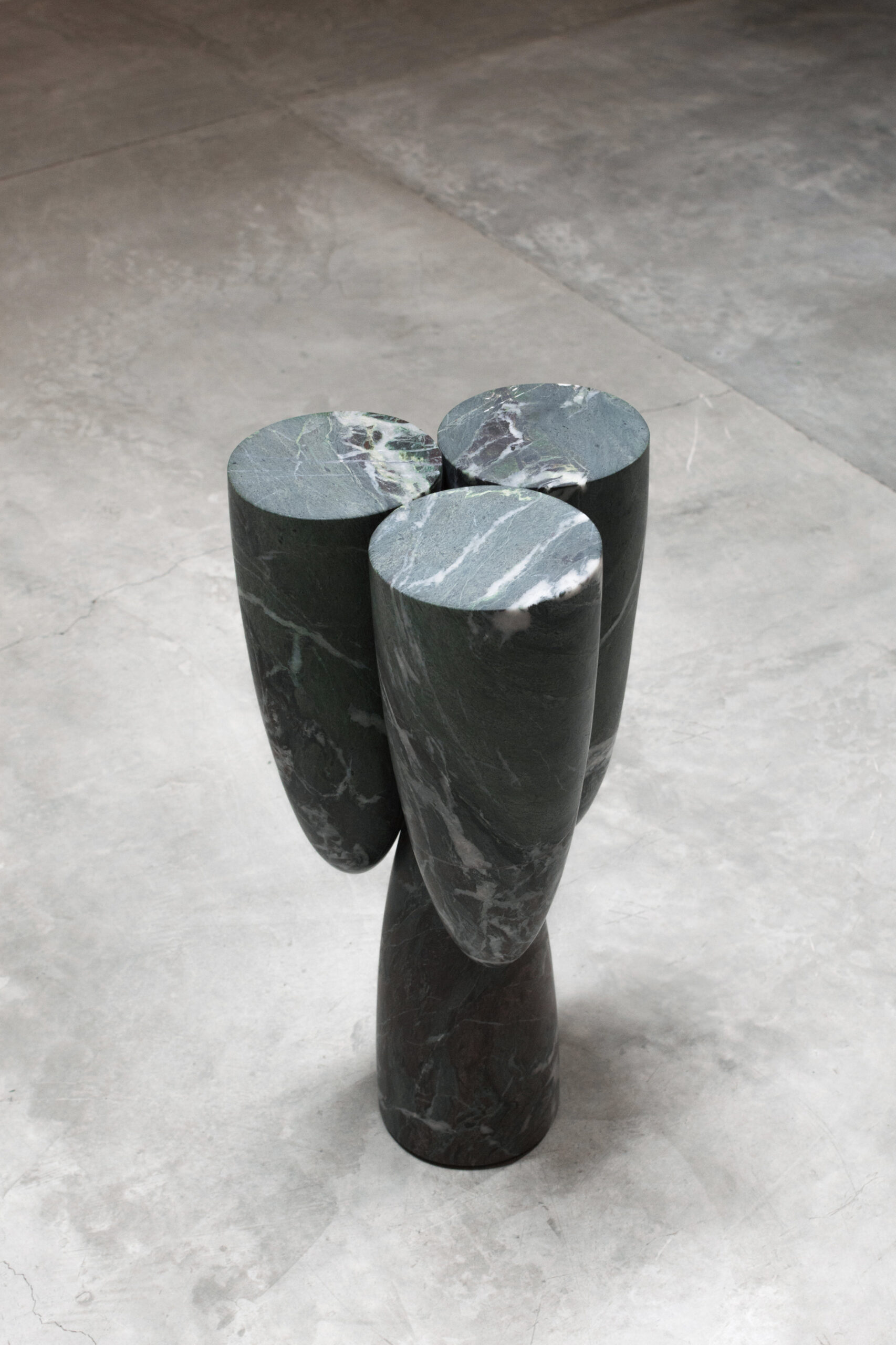

De manera similar al concepto de sincretismo (la fusión de diferentes creencias), las mesas Copal se inspiran en el misticismo mexicano para crear una serie de piezas que cumplen tanto funciones escultóricas como funcionales.
With love,
EWE